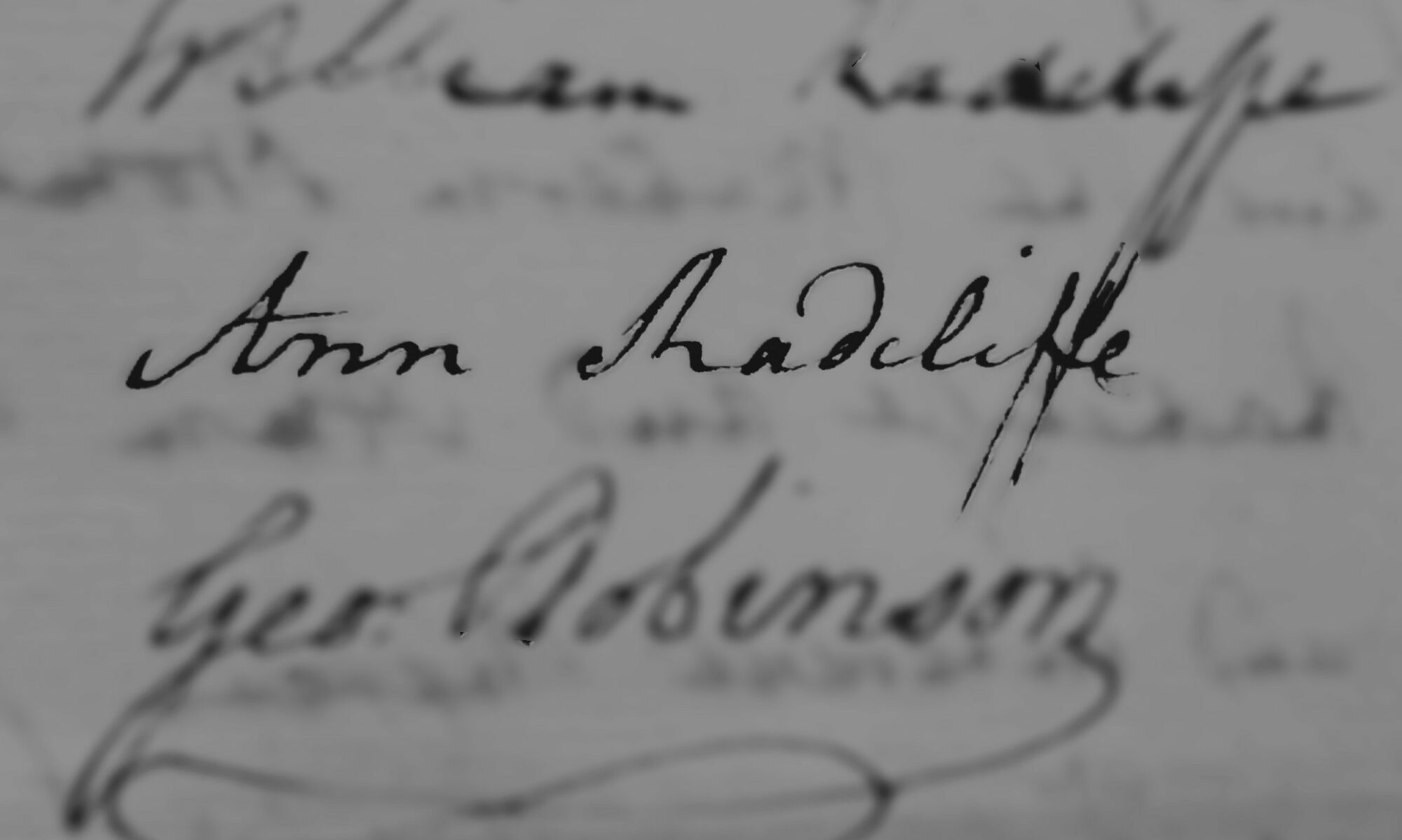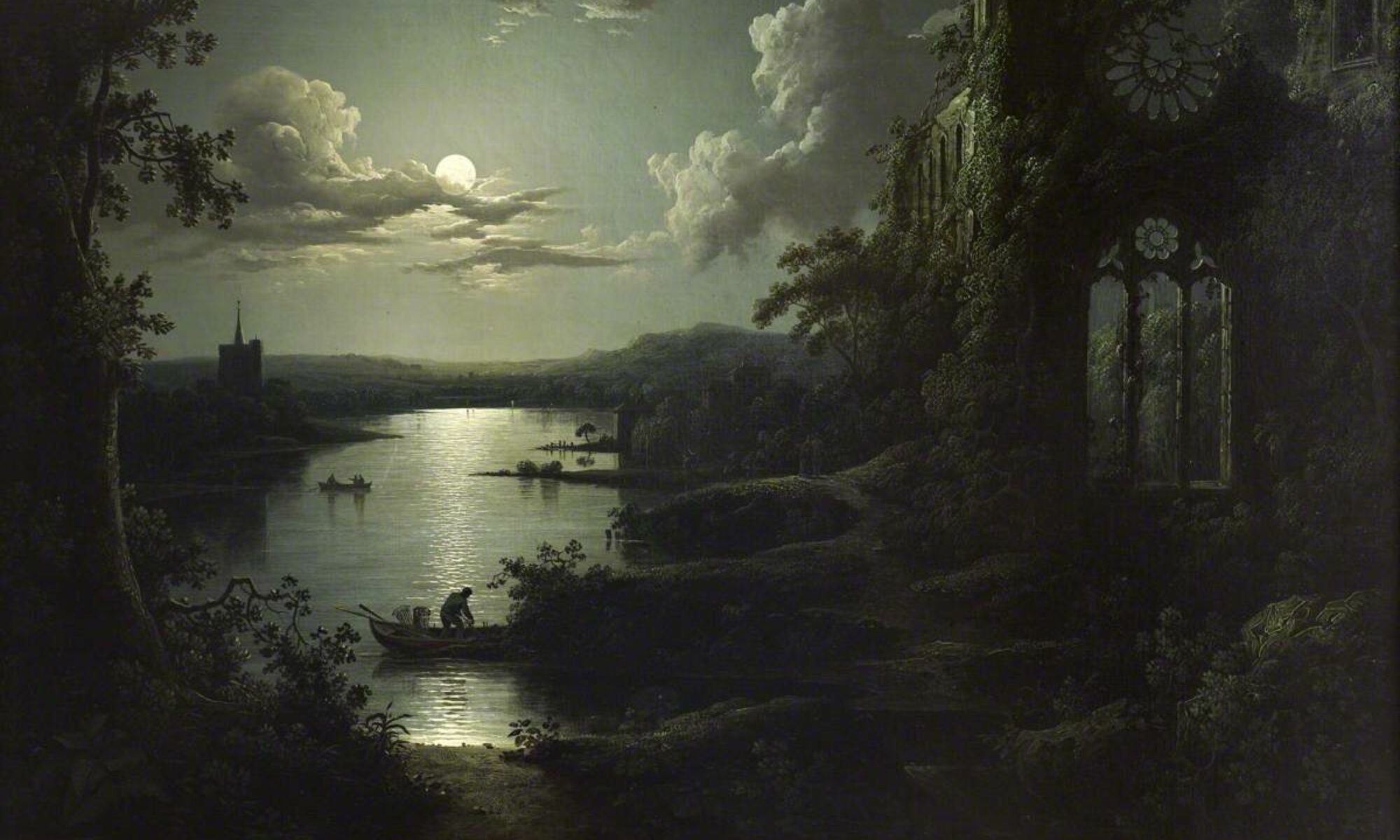Ann Radcliffe (1764–1823), known variously as ‘The mighty magician of the Mysteries of Udolpho’,1 ‘the first poetess of romantic fiction’2 and ‘the great enchantress’,3 was the most popular, widely read and well-remunerated fiction writer of the 1790s. Between 1789 and 1797, Radcliffe wrote and published poetry, five novels and a travelogue to great critical acclaim. One further prose romance, Gaston de Blondeville, was published posthumously alongside a biography of the writer by Thomas Noon Talfourd, extracts from her travel journals and a collection of some of the longer poems that she wrote during her lifetime. Radcliffe’s most famous novel, The Mysteries of Udolpho (1794),
was published by the radical Whig publisher George Robinson, earning her a copyright payment of £500 – approximately £78,729 in today’s money. Subsequently, Radcliffe went on to sell the copyright for her 1797 novel, The Italian; or, The Confessional of the Black Penitents, to Thomas Cadell for the sum of £800. As her contemporaries frequently acknowledged, Radcliffe was at the head of her own literary school, a startlingly original and accomplished writer who was instrumental in consolidating and popularising the Gothic as a literary mode, and considered, by many, to be ‘in every respect a true genius’.4
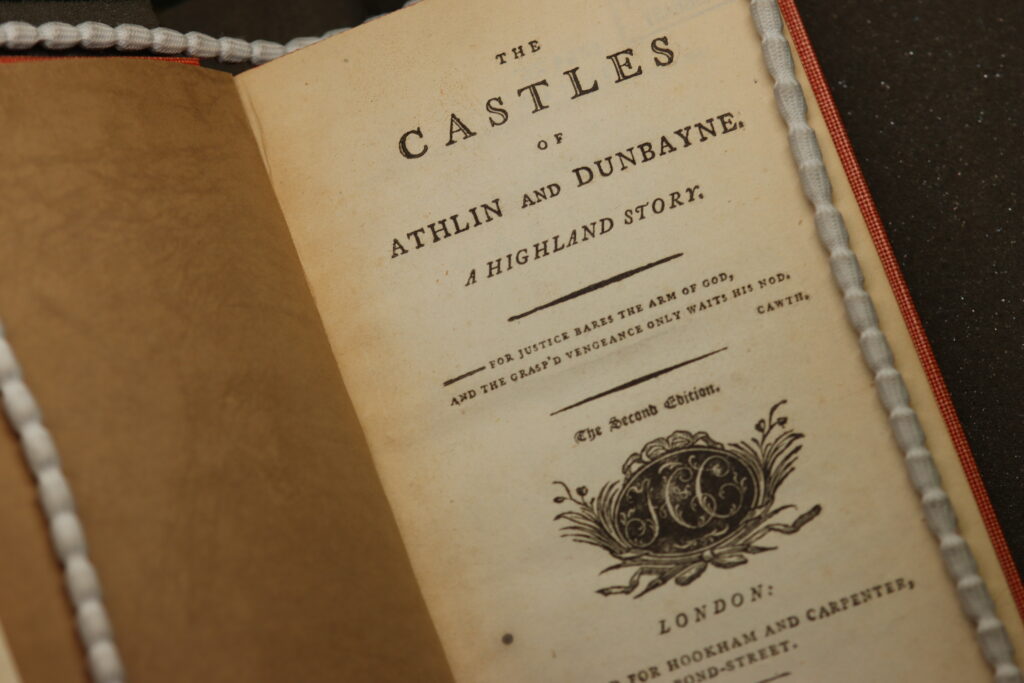
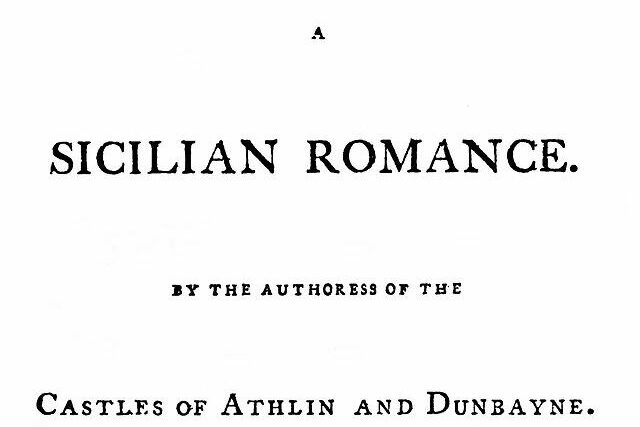
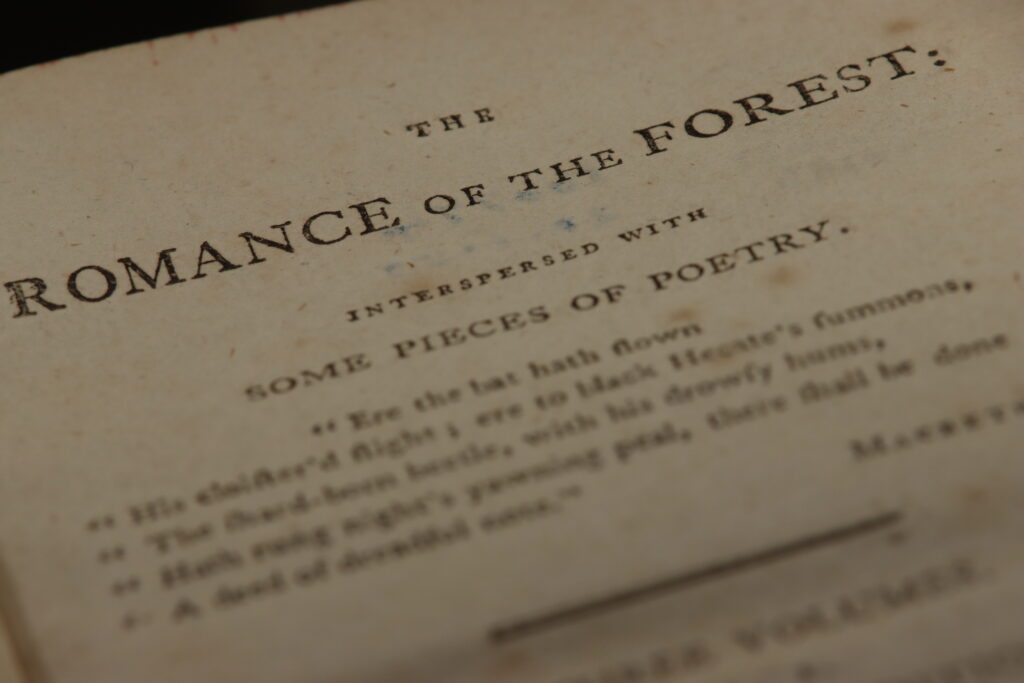
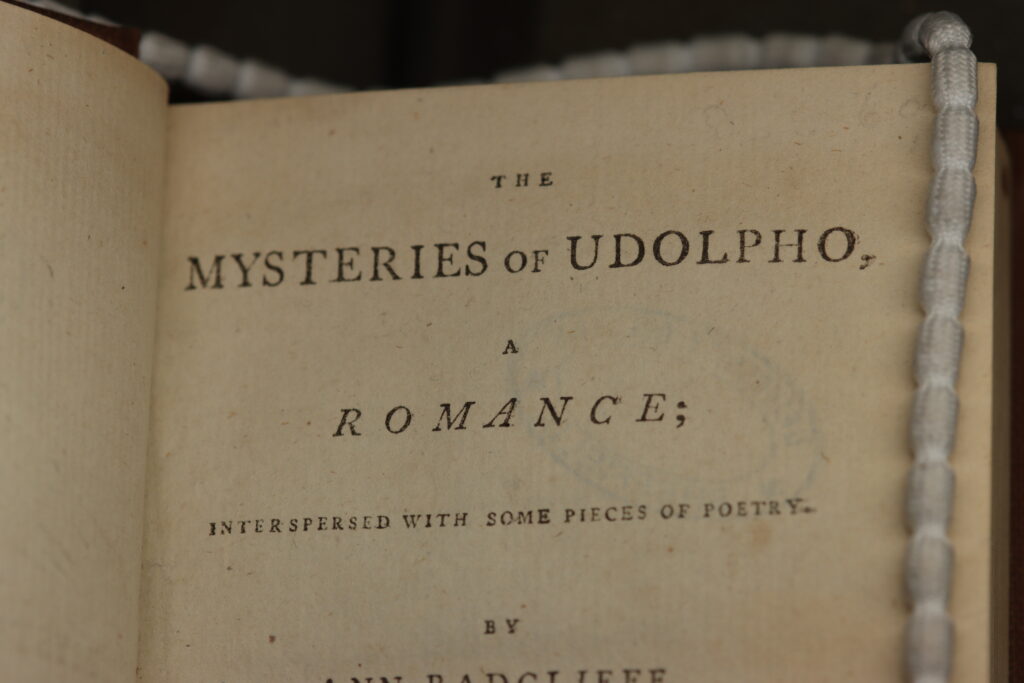

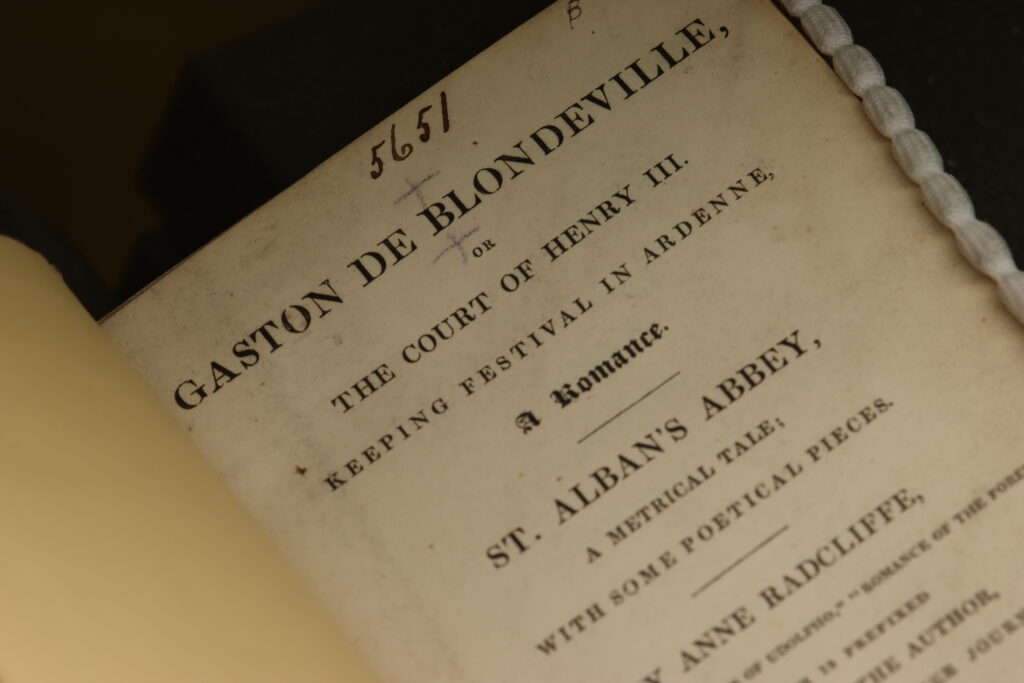
Photo credit: Jessannah Cooling, The Creative Media Service, TUoS
After the publication of her third novel, The Romance of the Forest, in 1791, Radcliffe experienced a sudden rise to fame. It was in the second edition of that fiction that she drew back the veil of anonymity that had shrouded her earlier novels, announcing herself as the author ‘Ann Radcliffe’ on the title page. From that moment onwards, Radcliffe held the attention of the periodical press. With each successive publication she was critically lauded as an exceptional writer of romance who combined tales of chivalry and suspense with considerations of such topical, political concerns as coverture (a woman’s right to own
property and to decide upon her suitor), a pressing issue that bore affinities with such radical contemporary writers as Mary Wollstonecraft and Charlotte Smith. Her work was regularly used by critics and reviewers as a benchmark to measure and assess the skill of other writers, and her success inspired countless imitators and influenced numerous others. To varying degrees, each of the major Romantic poets and writers paid homage to Radcliffe, and her work went on to inspire numerous Victorian novelists and poets from the Brontës to Charles Dickens, and beyond.
Despite achieving notable success in her lifetime, Radcliffe is little known today outside academic circles. Ann Radcliffe, Then and Now thus seeks to amplify the importance and brilliance of Radcliffe’s work for contemporary readers, generating fresh enthusiasm and regard for her work and reassessing her place in literary culture and aesthetics from the late-eighteenth century to the present. A major outcome of the project will be the staggered publication of The Cambridge Edition of the Works of Ann Radcliffe. Under the general editorship of Professor Michael Gamer (University of Pennsylvania) and Professor Angela Wright (University of Sheffield), The Cambridge Edition is the first complete, scholarly publication of Radcliffe’s novels, travel writing, and poetry. Radcliffe’s entire oeuvre will be published across eight volumes between 2025-8 and edited by world-leading experts in Radcliffe and the Gothic.
Working with Gamer and Wright as part of the editorial team are Project Co-Leads Katrina O’Loughlin (Brunel University), Deborah Russell (University of York), and Dale Townshend (Manchester Metropolitan University), and volume editors Elizabeth Bobbitt (University of York), Tom Duggett (Xi’an Jiaotong–Liverpool University), and Robert Miles (University of Victoria). Rosie Whitcombe (University of Sheffield) is the project’s Research Associate.
Each volume of The Cambridge Edition of the Works of Ann Radcliffe will provide a standardised version of Radcliffe’s original text, thorough and thoughtful commentary on her practice and essential contextual material that will provide insight into the conditions in which she worked. This new and complete edition of Radcliffe will make her work accessible to a broader, and more diverse, range of readers than ever before. Ann Radcliffe, Then and Now is also directing and developing a series of public engagement initiatives and events between 2024-7 to celebrate Radcliffe’s considerable literary achievements. These include free public lectures, school outreach programmes, reading groups, and an Ann Radcliffe conference-cum-festival.
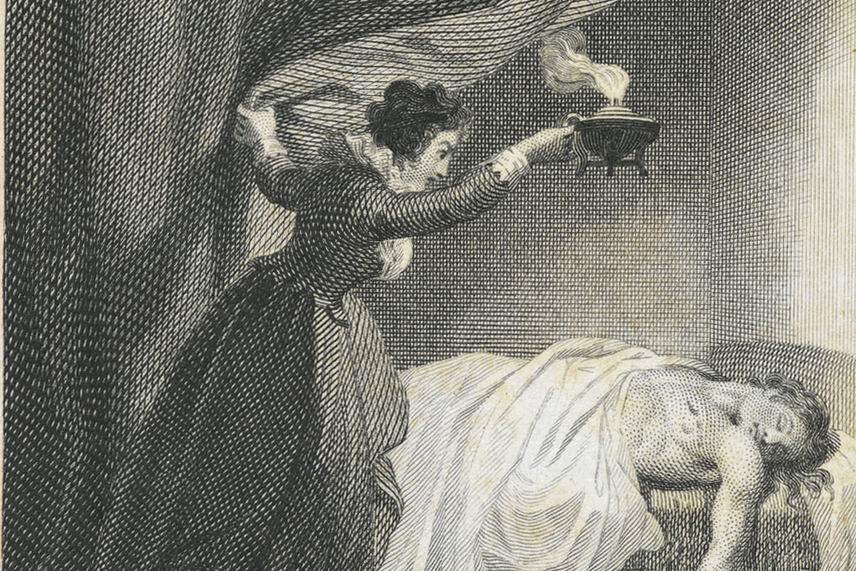
- Thomas James Mathias. 1798. The Pursuits of Literature: A Satirical Poem in Four Dialogues. With Notes . 8th edn. Dublin: J. Milliken. ↩︎
- Sir Walter Scott. 1824. ‘Prefatory Memoir to Mrs Ann Radcliffe.’ In The Novels of Mrs Ann Radcliffe […] . To Which is Prefixed, a Memoir of the Life of the Author . Novelist’s Library , Vol. x . London: Hurst, Robinson, and Co., i– xxxix. ↩︎
- Thomas De Quincey. 2000. The Works of Thomas De Quincey , Vol. ii : Confessions of an English Opium-Eater, 1821– 1856. Ed. Grevel Lindop. London: Pickering & Chatto. ↩︎
- ‘Public Amusements for July’, La Belle Assemblée: or Court and Fashionable Magazine, July 1809 ↩︎
